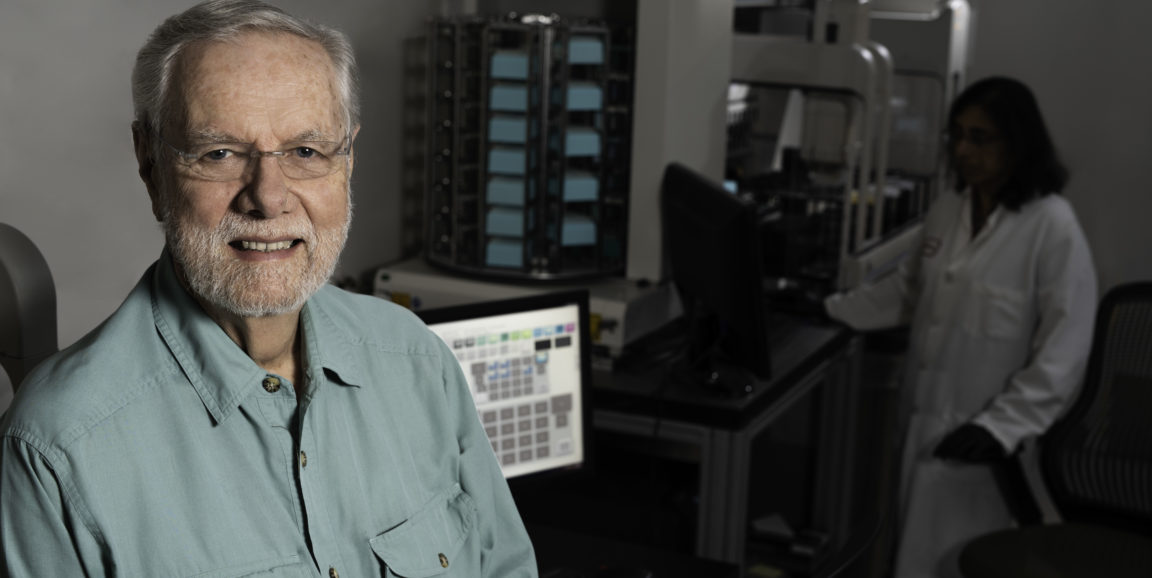For years, chronic fatigue syndrome, also known as myalgic encephalomyelitis/chronic fatigue syndrome (ME/CFS), has been undetectable by traditional tests that check the function of major organs or examine blood and immune cell counts. For these very sick patients, test results often come back normal, giving doctors few clues on how to proceed.
But now, patients with the devastating disease -- which causes debilitating fatigue, flu-like symptoms and something called post-exertional malaise, a condition that causes any symptoms to worsen after exerting even small amounts of effort -- may find vindication in a newly identified diagnostic test that provides the first scientific evidence of the disease.
A paper describing the research findings appears in the Proceedings of the National Academy of Sciences. Ron Davis, PhD, professor of biochemistry and of genetics, is the senior author. Rahim Esfandyarpour, PhD, a former Stanford research associate who is now on the faculty of the University of California-Irvine, is the lead author.
When I spoke with Davis, he told me about how his experience as a father who has watched his once-healthy son Whitney decline set him on a new path as a scientist -- to learn as much as he can about ME/CFS. He launched the Stanford Chronic Fatigue Syndrome Research Center in 2013.
"When I first announced my new direction years ago, I got all these messages from patients and caregivers," said Davis. "This disease is likely much more common than we think. Four people just within few blocks of my house contacted me -- they were bedbound due to their illness."
So too is Davis' son.
Whitney, who has had ME/CFS for more than a decade, has an IV to receive sustenance, fluids and medications. The setup also facilitates blood draws, which can be important for running different tests.
In fact the clue behind Davis' latest research was first spotted in a sample of Whitney's blood. It reveals itself through a newly developed test called a "nanoelectronic assay."
As we describe in our release:
The approach, of which Esfandyarpour led the development... is a test that measures changes in minuscule amounts of energy as a proxy for the health of immune cells and blood plasma.
...The idea is to stress the samples from both healthy and ill patients using salt, and then compare how each sample affects the flow of the electrical current. Changes in the current indicate changes in the cell: the bigger the change in current, the bigger the change on a cellular level. A big change is not a good thing; it's a sign that the cells and plasma are flailing under stress and incapable of processing it properly. All of the blood samples from ME/CFS patients created a clear spike in the test, whereas those from healthy controls returned data that was on a relatively even keel.
Since spotting the stress response in Whitney's cells, Davis and colleagues have tested for it in a group of 40 people, half of which have ME/CFS and half of which do not. Sure enough, the test clearly identified those with ME/CFS and did not flag anyone who is healthy.
With strong preliminary evidence of a diagnostic tool for ME/CFS, Davis and his colleagues are moving forward to test it in more patients. They are also planning to use the nanoelectronic assay to screen for drugs that can help stabilize the blood samples from ME/CFS patients.
Currently, recruitment for the project, which aims to further confirm the success of the diagnostic test, is done on a rolling basis. If interested in participating, please contact clinical research coordinator Anna Okumu (aokumu@stanford.edu).
Photo by Steve Fisch




